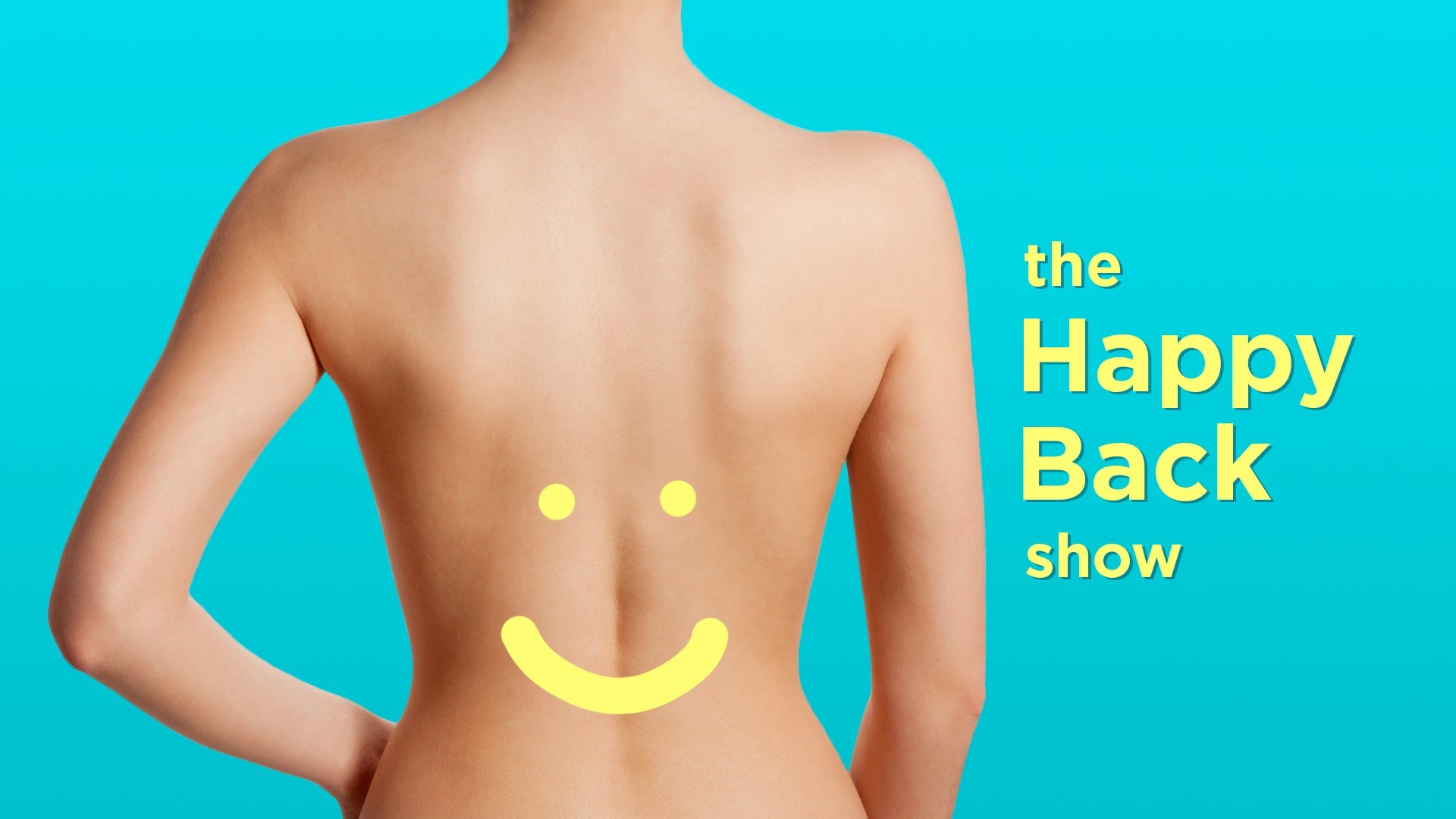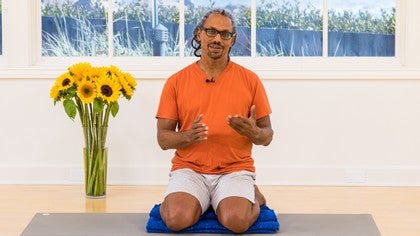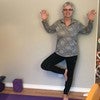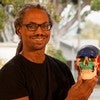Description
About This Video
Transcript
Read Full Transcript
Hi. We're going to spend some time exploring some of the interrelationships, of injury and emotions, especially the way our emotional responses to pain can really affect the way that we recover from injuries. One of the common things that we do when we get injured, is we tend to want to label the injury. We want to put it in a nice neat little box. Well I have scoliosis, and that's making my back hurt, or my gluteus medius is in spasm, and that's making my back hurt.
We want to put a thing label to it, so that we feel like we're getting understanding of what is really going on, what is really causing the pain. That labeling is handy, and I'm an anatomy teacher, so I'm one of the first people who would really get excited about labeling, and understanding all the different layers of the physical body, and that isn't quite a complete picture, because the labeling doesn't necessarily help us get any better. The other tendency that we tend to do, and that the labeling helps us do, is it helps us to avoid any sensation. We'll tend to really avoid any sensation when we've had pain, so if I've tweaked my back, I'm going to really guard my back, and try not to move in any way that makes me feel more sensation. That sensation may not be pain, but I just don't want to feel anything.
I'm going to really guard and protect, and not move. I'm going to recover for my back by sitting on the couch and doing Netflixasana. Motion is life, and emotion is a big part of life. With my private clients, when the come to me, and they're having pain, they'll often say, oh I have my rotator cuff is torn, or my mid-back is out. They'll tell me the things, and I'll often ask the question, is there anything else going on in your life?
Do to have any big emotional stressors? Most of the time people will say, no, nothing really. I mean, my dad just died, and I lost my job, and yeah, I'm getting a divorce, but nothing that has to do with this thing that's wrong with my body. It's almost like we want to be able to separate this thing. If I could just drop this body part off at the body shop, and pick it up later, when you're done fixing it Arturo, that would be really great.
Our emotions express and flower in the body. When you look at the developmental process, as we develop inside of mom, when we're a little tiny cluster of cells, one of the first structures that develops, is called the neural tube. It's basically the spinal cord and brain, is one of the first things that forms, and when you see it in a little perfect being, that's inside a mom, you can see the oneness of it, the interconnection of it. It's just as we get older, we tend to think of our mind and body as being separate, but the mind and body are so completely interwoven, that the mind expresses in the body. They're not separate.
The mind-body connection infers that there's a separation. There is no separation between body and mind. When we have an emotion, it expresses in our bodies. One thing that often happens when I start to bring up emotions for people who are feeling real pain, is our culture has this tendency to dismiss the emotions, so that when you're feeling pain. My pain is real.
It's not just in my head. That's the tendency when you hear there's an emotional layer to the pain. It's not just in my head. No, it's not in your head. Pain is real, because it's a real emotion, it's expressing physically on the body, so the emotions can be a real contributing factor.
Our emotional layers, our emotional instincts, are really important tools for survival, without our ability to recognize emotions, in faces, in people we know, in people, in strangers we don't know. Humans wouldn't have survived long without having emotional intelligence. Fear is a really important instinct, emotion, and it's the only instinct or emotion that can immobilize us. You may have heard of the fight or flight response. Sometimes it's called the fight, flight, and freeze response.
When the stimulus, the fright is so big that we freeze like a deer in the headlights. That often happens within our body-minds when we have pain. We'll freeze, and not move, and not breathe, and try to do as little as possible to avoid feeling that sensation again, or anything approaching that again. I've been fortunate, unfortunate enough to do a lot of research on my own body with various types of back injuries, and I could go into the names of the reverse lumbar curve, and I really got into the detailed diagnoses from several different doctors, chiropractors, acupuncturists. I would get a little bit better with treatment.
I would get most improvement with time, but mostly I had a mental pattern that was stuck. I would tweak my back, and then go, oh no, this is gonna be, and my mind would start spinning into this is going to really suck. I'm going to have to be really careful for the next couple of weeks. I can't do this. Oh I better go see my doctor, and I better go get some acupuncture, and I would basically just tighten up and freeze at the first sensation of pain.
A few years ago, I got introduced to the work of Dr. John Sarno. He's got a very interesting approach to working with pain. He's based in New York, and he has several books on healing back pain, and on body-mind dysfunction issues. One of the things that he says is when you have pain, it's part of this emotional intelligence, that you might not even be conscious of, that's causing tension and causing the dysfunction, the pain and dysfunction in the body. He really emphasizes movement, to keep moving, to not immobilize yourself, not guard against every little thing, but to keep moving your body, as much as you can without trying to make it painful.
Acknowledge that there is an emotional layer. He doesn't even say that you have to figure out what the emotional layer is, but just acknowledge that there is an emotional layer. A few years ago, I read his book, and a month or so later, I tweaked my back, and I started to go through the process, oh no, I'm gonna, oh, that, that. I went, wait a minute. I'm going to try Dr. Sarno's approach.
I went back to his book, and went through the steps. The next day my pain was 90% gone. The day after that, I was pain free, and so my body has changed. My back is better now I'm in my late 50s. My back is better now than it was when I was 30.
Most of it is through this process of moving when there's sensation, continuing to move when there's sensation. Also moving when there's not sensation. I practice yoga. I stand up paddle surf. I do aikido.
I stay really active, and I'm not staying in couchasana, and just watching TV all the time. Some of the time. I would suggest, one thing you can experiment with, is when you have a sensation, when you have a tweaking of the back to try moving, and breathing, and acknowledging that there may be an unconscious emotional layer of the discomfort. I'm not saying it's in your head. Your emotion is expressing flowering out into your body, and see how you feel.
See if it improves the quality of life, and the ability to recover from those little tweaks and twinges that we all get. Thanks for your attention. Namaste.
The Happy Back Show: Low, Mid, and Upper Back Relief
Comments
You need to be a subscriber to post a comment.
Please Log In or Create an Account to start your free trial.















